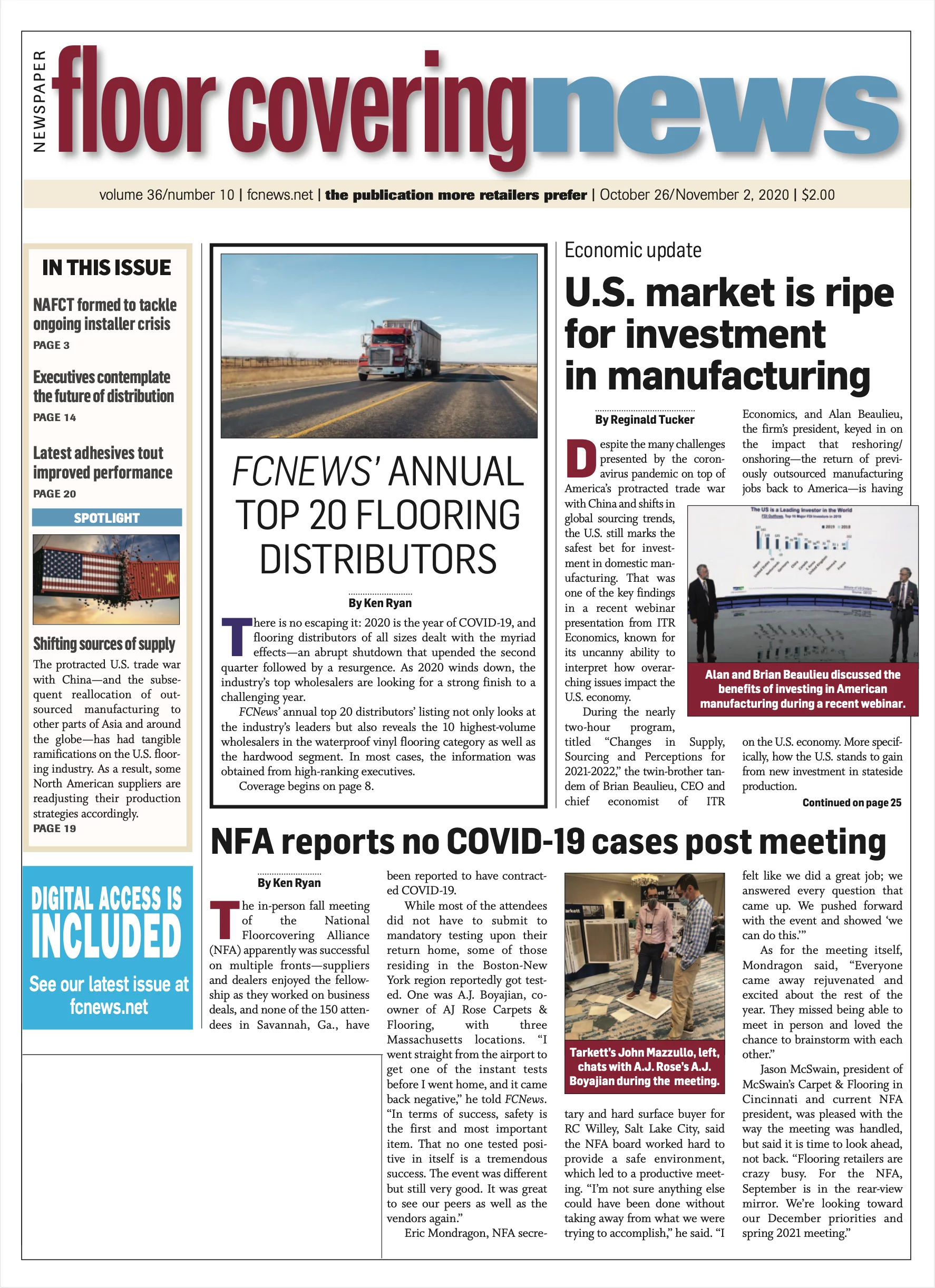By Steven Feldman
 The cover date of this issue is Nov. 2. That means if you are reading this on that date, tomorrow is Election Day. There’s a side of me that wants to pontificate about this election, but there’s also a side of me that doesn’t want to hear it from half of you. Because at the end of the day, on Nov. 4 (or maybe a year from now until all the mail-in votes are counted and recounted 10 times) half the population will be happy and the other half will be rioting—er, protesting, according to the AP StyleBook.
The cover date of this issue is Nov. 2. That means if you are reading this on that date, tomorrow is Election Day. There’s a side of me that wants to pontificate about this election, but there’s also a side of me that doesn’t want to hear it from half of you. Because at the end of the day, on Nov. 4 (or maybe a year from now until all the mail-in votes are counted and recounted 10 times) half the population will be happy and the other half will be rioting—er, protesting, according to the AP StyleBook.
But there is something related to this election that I can talk about, and it’s something of interest to many FCNews readers: how the election results will impact your investment portfolio. According to the firm that manages my retirement account, the answer to that question should be “not much.” Why?
- All successful investing is goal focused and planning driven, such that all successful investors are continuously acting on a plan.
- All failed investing is market focused and current events driven, such that all failed investors are continually reacting to current events, the markets and short-term performance statistics.
Reacting to your perception of election risk by reflecting your fears in determining portfolio strategy will likely result in a financial error.
This firm to which I refer sent out a newsletter recently that offered an interesting statistic: There have been 21 election years since 1936. All but two of them (2012 and 2016) now have prospective 10-year market return histories. A Democrat won 11 times and a Republican won 10 times. According to Thomson InvestmentView, 18 of the 19 election years with 10-year prospective market return data periods yielded positive results for the S&P 500.
The one period that did not was virtually unchanged and that was the 2000-2009 period. The highest returning decade was 1988-1997 when George H.W. Bush was elected and $10,000 grew five-fold (annualizing at about 18%) to over $52,000. So, to summarize, of all the 10-year periods beginning with an election year, returns were positive 95% of the time. The average annual return during the Democratic regimes was 10.7%, while the average during Republican regimes was 10.5%.
Moreover, according to research by Capital Group, Strategas, the average annual returns by various party control scenarios were:
- Unified government whereby the White House, House and Senate were controlled by the same party: S&P 500 annualized at 10%
- Unified Congress with President in other party: S&P 500 annualized at 7.4%
- Split Congress, regardless of White House control: S&P 500 annualized at 10.4%
Historically, the 10-year market periods beginning with an election year have been among the most rewarding. While many investors will say, “This time is different,” the reality is that it probably is not.
The economy and stock market are never linked, other than over the very long term. During one of the poorest recoveries from a recession in modern history (2009-2012), when the economy grew between 1% and 2% annually and unemployment remained over 7%, stocks returned 14% annually—a 40% premium to long-term average returns. The moral: The economy will not tell us what the stock market will do.
Instead of asking what moves you should make in response to the catastrophe du jour, in this case COVID-19, realize that it will have very little to do with your plan 20 years from now, because that and the 10 years on either side of that is the focal point of most plans.
What does all this have to do with flooring? Nothing and everything. While every election brings with it some degree of uncertainty, know that whatever happens on Nov. 3, you and your customers will not see portfolios go up in flames. You’ll still be able to retire one day, and your customers will still be able to purchase flooring.

